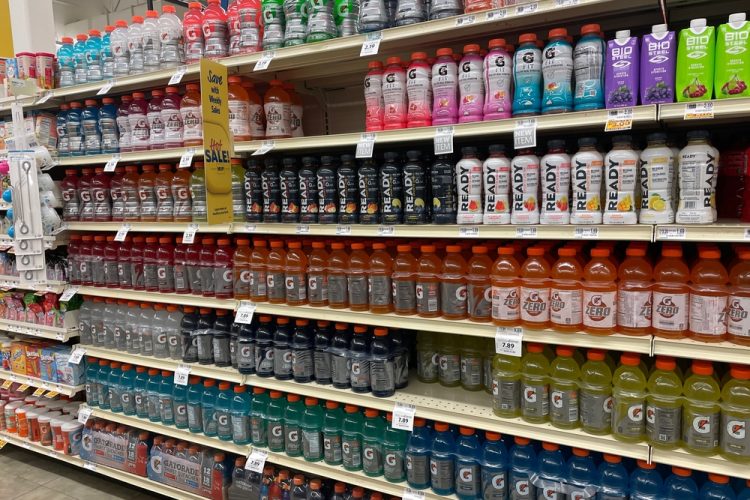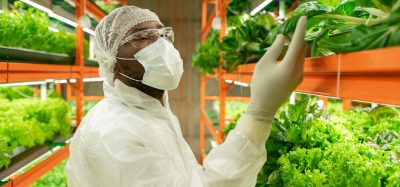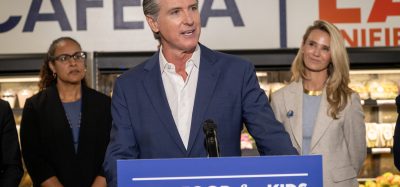Synthetic dyes found in 1 in 5 US packaged foods and drinks
Posted: 25 June 2025 | Ben Cornwell | No comments yet
Research finds widespread use of synthetic dyes in US packaged foods and drinks as FDA pushes phase-out amid growing health concerns, especially for children’s products.


Sports drinks were the worst category overall, with 79 percent including synthetic colouring regardless of the manufacturer. Credit: Billy F Blume Jr / Shutterstock.com
Nearly one in five packaged foods and drinks sold in the United States contain synthetic food dyes, according to a sweeping new analysis of almost 40,000 grocery store items. The findings, published today in the Journal of the Academy of Nutrition and Dietetics, highlight growing health concerns particularly for products targeted at children.
Researchers from The George Institute for Global Health, the University of North Carolina and the Center for Science in the Public Interest (CSPI) examined ingredient data from the top 25 US food manufacturers.
Synthetic dyes were found in 19 percent of all products, a figure that jumped to 28 percent in categories most marketed to children such as confectionery, sugary drinks, breakfast cereals, ready meals and baked goods.
Dr Elizabeth Dunford, Research Fellow at The George Institute and Adjunct Assistant Professor at the University of North Carolina, said:
Given the accumulation of evidence over the last 40 years pointing to the health harms of synthetic dyes, it’s disappointing to see that they’re still so prevalent in our food system, particularly in products that are designed to appeal to children.”
Higher sugar content
The study also found that products containing synthetic dyes had significantly higher sugar content, averaging 33.3g per 100g compared to 13.8g in dye-free items – a staggering 141 percent increase.
Dr Dunford added:
The high levels of sugar in these brightly coloured products suggests that companies are using synthetic dyes to market sweet foods and beverages but both ingredients are linked to poor health outcomes.”
The most frequently used dye was Red 40, found in 14 percent of all products. Leading offenders included confectionery giants Ferrero and Mars, whose product ranges featured synthetic dyes in 60 percent and 52 percent of items respectively. PepsiCo’s energy drinks weren’t far behind, with 51 percent containing synthetic dyes. Sports drinks were the worst category overall, with 79 percent including synthetic colouring regardless of the manufacturer.
Synthetic food dyes are used to enhance visual appeal and compensate for colour inconsistencies but they are increasingly linked to behavioural problems, particularly in children, including hyperactivity and attention disorders.
Dr Thomas Galligan, Principal Scientist for Food Additives and Supplements at CSPI, said:
The FDA recently asked the food industry to voluntarily phase synthetic dyes out of the food supply but many companies had previously made promises to stop using them and then failed to keep those promises.
If the FDA were to require warning labels on synthetically dyed foods, similar to the rule in place since 2010 in the European Union, there would be a much stronger incentive for industry to reformulate.”
Pivotal moment for the industry
This study comes at a pivotal moment. Last week, food giants Kraft Heinz and General Mills announced plans to eliminate synthetic dyes across their entire US portfolios by the end of 2027. Meanwhile, the US Food and Drug Administration (FDA) is taking more aggressive regulatory steps.
In April, the FDA laid out a roadmap to phase out petroleum-based dyes by the end of 2026. The plan includes:
- Establishing a national standard and transition timeline to natural alternatives
- Revoking approvals for Citrus Red No. 2 and Orange B within months
- Phasing out six major synthetic dyes: FD&C Green No. 3, Red No. 40, Yellow No. 5, Yellow No. 6, Blue No. 1 and Blue No. 2
- Accelerating the approval of four natural colour additives, with more under review
- Moving up the removal date for FD&C Red No. 3, previously planned for 2027–2028
Last month, the FDA approved three new natural dyes: Galdieria extract blue, butterfly pea flower extract and calcium phosphate, offering manufacturers plant-based alternatives to petroleum-derived colourings.
Consumer vigilance
Dr Dunford said it was encouraging to see that dozens of US states have now introduced bills taking aim at synthetic dyes this year and the results of this research were likely to be immediately useful for policymakers. For now, she advises consumers to remain vigilant.
Until the regulatory process catches up with the science, parents and health-conscious consumers should always check the ingredients label for synthetic dyes and for high levels of added sugar. If a product contains either, you are better off not buying it, especially for your kids.”
Related topics
Flavours & colours, Food Safety, Health & Nutrition, Ingredients, retail, Supermarket, The consumer
Related organisations
Center for Science in the Public Interest (CSPI), The George Institute for Global Health, University of North Carolina









